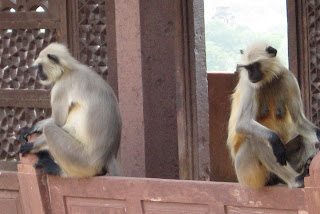Initial scene: a lavish buffet in Connaught Place
Current scene: a half-unpacked bedroom in Davis SquareJust before leaving Delhi, I met with one of my mentors who helped me wrap my head around my summer experience. Dr. Bobby John, an OB/GYN by training and a leading activist on public health around the world, said something to the effect of:
"After a week-long visit to India, people fly out thinking, 'Been there, done that... I know India.' After a few months in India, people fly out realizing that they know nothing about the country. After a lifetime in India, we're all left wondering, "What is India?"I came to India with more humble intentions and leave with more humble questions.
First, I set out to experience and learn about rural sustainable development and women's empowerment. Most of the billions of people who live in abject poverty around the world do so in rural areas, not in the slums of cities or their outskirts. And, empowering women is widely regarded as one of the most effective strategies for reducing poverty and improving governance... and an end in its own right. That said, I had never really dug into either and was eager to immerse myself.
The verdict: thanks to PRADAN, I now have a deeper (yet still rudimentary) understanding of organizing's role in transforming women from voiceless shadows in their homes to the leaders of self-help groups and producer companies. Before this summer (and since Reagan?), I was deeply suspicious and therefore completely dismissive of markets and the private sector. Period/full stop. This summer, though, has helped me begin to develop a more holistic and nuanced (yet still critical) perspective about the potential and pitfalls of markets and entrepreneurship. Luckily I have two more semesters to continue exploring these issues through my coursework and consulting projects.
Secondly, I wanted to apply and test my skills and knowledge of advocacy with an organization whose mission and values I respect. One Microsoft Powerpoint presentation of 68 slides and 10 appendices later, we successfully developed a whole conceptual framework and operational plan for PRADAN to wade into advocacy. That process has raised some interesting questions for me about advocacy in different cultural and political contexts and the challenges of shifting mindsets toward advocacy and activism. Luckily I have the rest of my advocacy and perhaps policymaking career to continue exploring these ways of making change.
Lastly, I wanted to experience as much and as many Indian cultures as possible. Living with three young Indian professionals, working and traveling alongside my Indian colleagues, and visiting several remarkable places across north, west, and eastern India sure exposed me to.... well, a whole lot. Sufi musical tradition to Buddhist monasteries... Gorkaland independence to Naxalite movements... organic tea plantations to India/Pakistan pep rallies... Paneer butter masala in Punjab to soy-sauce soaked momo's in Sikkim... Yep, I got around, despite a few bodily hiccups. But, such is the country that I feel I could spend a lifetime there and still never know how to answer "What is India?" Luckily when I get back to India, I'll be better prepared to eat with my hands, haggle with my auto rickshaw driver, and nod my head the Indian-way.
And for all of this, I am incredibly grateful for the generous support of the Women in Public Policy Program and Roy Family Cultural Bridge Fellowship for making my experience and learning possible.
final musings
15 years ago















































